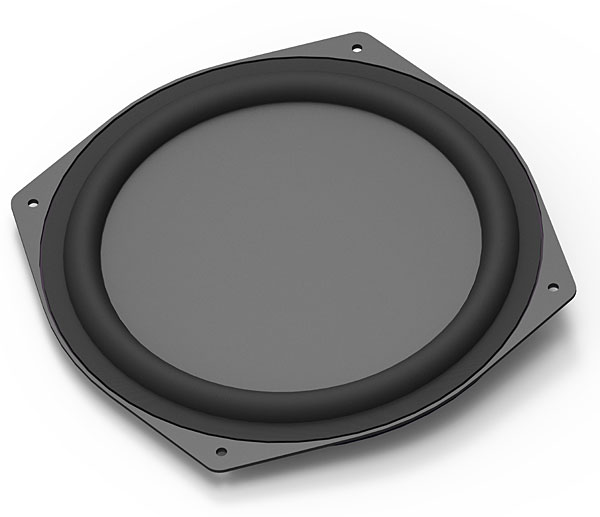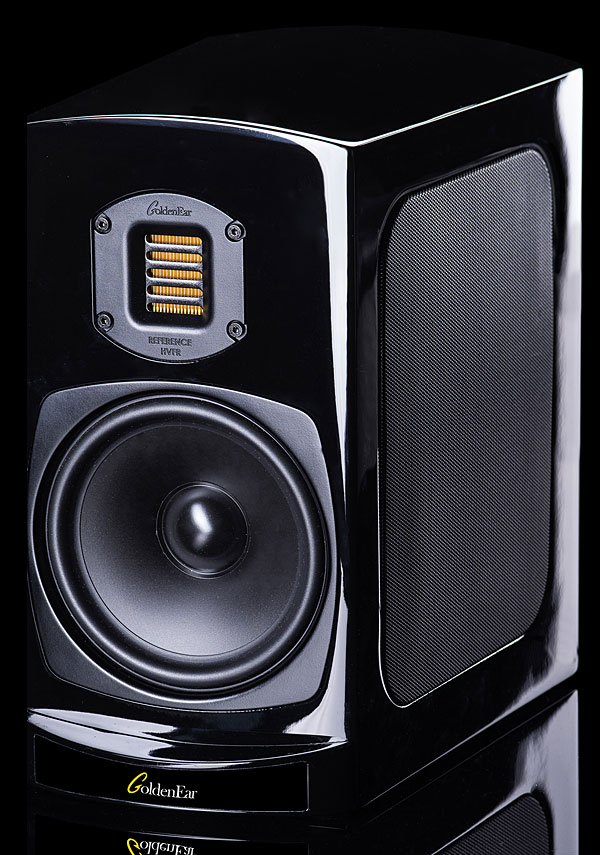I'm a current owner of a system with Aon 2 speakers and was hoping to see measurements for the new BRX speakers. Will you be posting them?
GoldenEar Technology BRX Bookshelf Speakers Review Page 2
Performance
Starting out with test tones, a low-frequency sweep indicated usable bass extending down to, and even below, the 40-Hz limit GoldenEar cites in its specifications. Such a result boded well for playback of a big blues-band track like Van Morrison's "I Love the Life I Live" from The Prophet Speaks (24-bit/96kHz FLAC, Qobuz), which was presented with lifelike dynamics and a sense of scale that transported me to a close-up table in an intimate club. While the bass on this track didn't wasn't particularly deep, there was a marked fullness to the sound that didn't leave me wanting. Van's voice, meanwhile, sounded nicely fleshed-out and free of any "shouty" or edgy character; it also integrated smoothly with instruments in the mix like Hammond organ, brass, and guitar, all of which came across as lush, yet detailed.

Sticking for the moment with distinctive male voices, I next played "Easy Money" from Abbatoir Blues / The Lyre of Orpheus by Nick Cave & The Bad Seeds (16/44.1 FLAC, Qobuz). Here again, vocals showed an appropriate degree of heft while sounding well-balanced with lighter elements in the mix such as a background chorus and strings. Piano had a crisp, clear presence and was free of treble edge or bite. I also noted the distinct presence of bass guitar and drums on this track, which managed to move things along at a propulsive clip while simultaneously sounding laid-back.
Few things disappoint me more than cueing up a techno track and hearing a wimpy 4/4 beat. To test this with the BRX, I streamed "Syncope" from the Steve Hauschildt album Dissolvi (16/44.1 FLAC, Tidal) and was rewarded with an electronic kick drum that sounded warm and well-rounded while also maintaining a punchy character, even when I turned the volume up well past a preferred listening level. Wanting to further test the BRX's ability to handle dynamics, I next played the Saturn section from a JVC CD of Holst's The Planets-Suite (Los Angeles Philharmonic conducted by Zubin Mehta). The thunderous brass and bells in the spectacular climax of this slow-moving piece came across as full-bodied with no compression or hardening of the sound even at a loud volume. Overall, the BRX's performance here was remarkably robust for a compact speaker.
Ending my listening session on a mellow note, I streamed "Bahia" from the Anouar Brahem album Blue Maqams (24/96 FLAC, Qobuz), a track that perfectly showcased both the BRX's easy, natural tonal balance and ability to convey fine detail in recordings. Closing my eyes, I could sense the position in space of Brahem's oud and appreciate the resonance of its wooden body and plucked strings. When Dave Holland's standup bass eventually joined in, it provided a rich foundation that, combined with drummer Jack DeJohnette's deft cymbal work, resulted in strikingly spacious sound.
Comparison
To get a sense of how the BRX compared with other bookshelf speakers, I listened to it using the same tracks alongside Polk Audio's L100, the baby model in that company's new Legend Series speakers. Differences? At 7.8 x 13.6 x 11.3 in (WxHxD), the L100's ported cabinet has a taller profile than the BRX, and its driver array consists of a 1-inch tweeter and 5.25-inch woofer. The L100's $1,119 price also makes it a more affordable bookshelf option than the BRX.

Playing the Van Morrison track on both speakers, the L100 had a crisp, dynamic character with a brighter overall tonal balance that drew vocals forward in the mix and emphasized elements like electric guitar and cymbals. The BRX, in comparison, had a more evenly balanced, laid-back sound, though I didn't find it to be lacking at all in detail. With the L100, Nick Cave's voice came across as distinctly separate from the background vocals and instruments in "Easy Money," and the added crispness and drive on piano, bass guitar, and snare drum made for a more rockin' presentation.
While the BRX did have better bass extension than the L100 on my demo tracks (Polk Audio's specs cite the speaker's -3dB lower limit at 57 Hz), the contrast ultimately wasn't that dramatic. Some differences in bass quality could be heard, however, particularly on a track like "Syncope," where the song's electronic beats sounded decidedly smoother and more muscular on the BRX. And while both speakers displayed wide imaging, along with a level of depth that helped them to "disappear," the BRX had a lush, warm sound that I found I preferred on this song and also on the acoustic jazz track "Bahia."
Conclusion
They say family is everything, and GoldenEar Technology's BRX bookshelf speaker bears that aphorism out. The company's latest addition brings the good looks and highly sweated-over sound of its Reference line to a compact package that, at $1,599/pair, marks an affordable entry point for high-end performance. True story: When working on my review, I blanked on the BRX's cost and was operating under the mistaken impression that GoldenEar was selling it for $1,599 each. But even that price didn't strike me as outrageous compared with other stand-mounted speakers from audiophile-oriented brands, and also seemed reasonable in the context of the Reference speaker lineup. When I was eventually reminded of the BRX's actual cost, its price-performance ratio shot through the roof.
Other final thoughts? In my time with it, I found that the BRX's natural tonal balance and dynamic, effortless character invited extended listening, and while bass in this case is necessarily limited due to cabinet size, the low-end the BRX does manage is surprisingly powerful for a small-ish speaker. The BRX pair required careful placement to get best performance in my room, but once that was locked in, everything clicked and the result was well in line with the reference-quality sound I've come to expect from the Reference series.
- Log in or register to post comments


Owned MartinLogan 35XTi's for about a month. Quickly traded them for the GoldenEar BRX's. The 35XTi's have a distinct sonic signature that tends toward a very lean and, often, strident and fatiguing mid-range. The BRX's are equally detailed, smoother and more relaxed; all while casting a larger sound stage. Both instruments and voices have a natural presentation that simply blossoms and never sounds over-etched. Think of movie scenes shot in morning light versus those filmed at mid-day. Everything looks richer in morning light and, in a nutshell, that is how the GoldenEar Brx's sound.























































